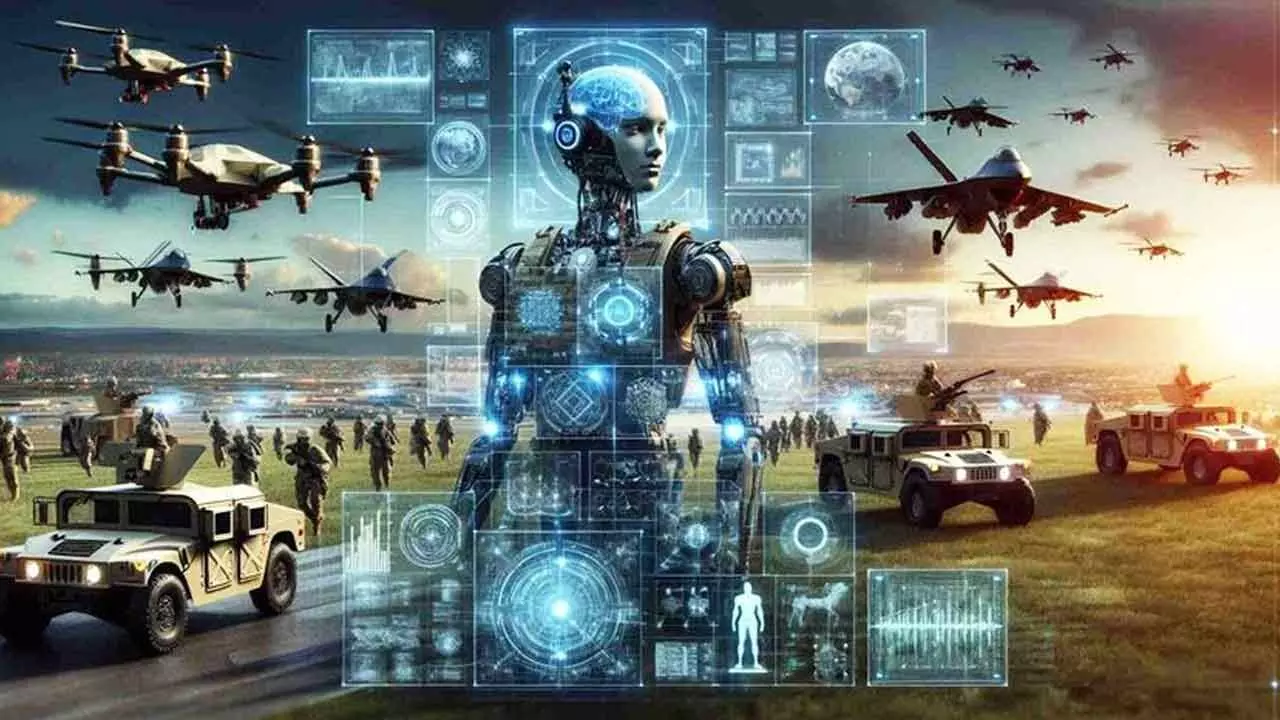Robotics And Drones Will Be Strategic Weapons In Modern Warfare
Autonomous systems can be reprogrammed quickly to suit different mis-sions and the rapidly changing combat scenarios
Robotics And Drones Will Be Strategic Weapons In Modern Warfare

International agreements and ethical guidelines will be necessary to ensure the responsible and ethical use of military robotics and autonomous systems on the battlefield
Military robotics and autonomous systems are reshaping the landscape of modern warfare. These technologies offer numerous advantages in terms of safety, efficien-cy, and adaptability, but they also raise important ethical and operational challeng-es. As we move into the future, it is crucial for military organizations, policymakers, and the international community to navigate these challenges responsibly and en-sure that they are used for the benefit of society while minimizing harm of any form.
The future of warfare will undoubtedly be characterised by a closer integration of humans and machines, making it imperative that we strike a careful balance be-tween innovation and ethical considerations in this rapidly evolving field.
Military robotics and autonomous systems encompass a wide range of technologies, including unmanned aerial vehicles (UAVs), unmanned ground vehicles (UGVs), au-tonomous submarines, and even humanoid robots.
These systems are designed to carry out various tasks, from reconnaissance and surveillance to combat and logistics, with minimal human intervention.
A key area where military robotics finds primary application is in reconnaissance and surveillance. UAVs equipped with advanced high-resolution cameras and sen-sors play a pivotal role in collecting vital data concerning enemy positions, terrain features, and ongoing activities. These autonomous systems excel in operating with-in hostile environments, mitigating the risk to human lives, and thereby serving as invaluable assets for military intelligence operations.
Robotic systems can also play a direct role in combat operations. Armed UAVs and UGVs are capable of engaging enemy forces, providing cover fire, and neutralizing threats. Their precision and speed can give the military a significant advantage in battle.
Autonomous systems equipped with advanced sensors are used for mine detection and clearance. They can navigate minefields, identify explosive devices, and neutral-ize them safely, reducing the risks to human deminers.
The integration of robotics and autonomous systems into military operations offers several advantages that are driving their adoption across the globe: One of the most significant benefits is the enhanced safety of military personnel. By delegating dan-gerous tasks to robots and autonomous systems, the risk to human lives is signifi-cantly reduced.
These technologies excel in precision, making them invaluable for tasks that require accurate targeting or data collection. UAVs, for example, can deliver precise air-strikes with minimal collateral damage. Robotic systems can operate 24/7 without fatigue, ensuring continuous surveillance, patrolling, or reconnaissance even in the most challenging conditions.
While the initial investment in developing and acquiring military robots can be sub-stantial, the long-term cost savings in terms of reduced manpower and increased operational efficiency are often significant. Autonomous systems can be quickly re-programmed and adapted for different missions, making them versatile assets in rapidly changing combat scenarios.
Challenges and ethical aspects:
While the benefits of military robotics and autonomous systems are clear, there are also challenges and ethical considerations that must be addressed.
Autonomy and decision-making: As these systems become more autonomous, questions arise about the extent of human control over their actions. Ensuring ethi-cal decision-making and avoiding the potential for unintended consequences is a critical challenge.
Cybersecurity: Military robots are susceptible to hacking and cyber-attacks, which could compromise their functionality or, worse, turn them into weapons against their operators.
Ethical use of lethal force: The use of armed autonomous systems raises ethical questions about the responsible application of lethal force, especially in situations where human judgment and empathy are necessary.
Accountability: Determining responsibility for actions taken by autonomous sys-tems in the event of errors or accidents is a complex issue that needs to be ad-dressed.
The future of warfare:
Looking ahead, it's evident that military robotics and autonomous systems will play an increasingly significant role in the future of warfare. Here are some key trends and developments to watch for:
Swarm technology: Advancements in swarm technology will enable the coordina-tion of large numbers of autonomous drones or robots, providing new capabilities for reconnaissance, surveillance, and even overwhelming enemy defenses.
Artificial Intelligence: AI will continue to enhance the decision-making capabili-ties of military robots, making them more adaptable and responsive in dynamic combat situations.
Human-machine teaming: The future of warfare may involve closer collabora-tion between humans and machines, with soldiers working alongside robots to max-imize their combined capabilities.
Miniaturization: The development of smaller, more agile robots will open up new possibilities for urban warfare and operations in confined spaces.
Ethical Guidelines: International agreements and ethical guidelines will be nec-essary to ensure the responsible and ethical use of military robotics and autono-mous systems on the battlefield.
While these systems offer the potential to reduce risk to human soldiers and poten-tially make more precise decisions in combat, finding the right balance will be es-sential for both militaries and policymakers worldwide.

